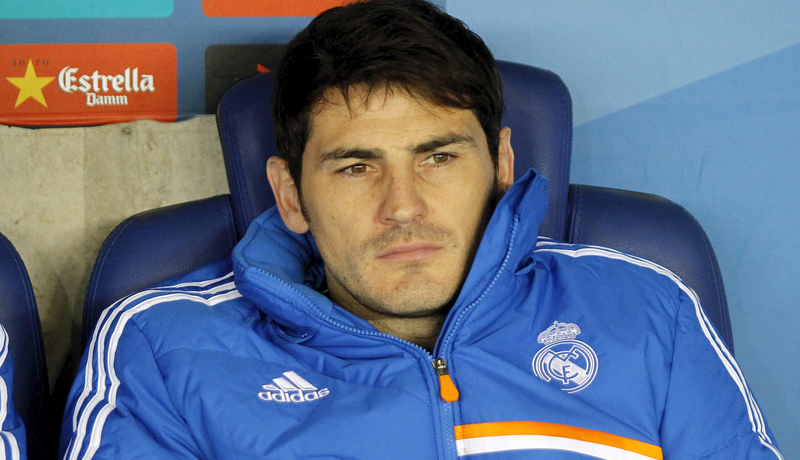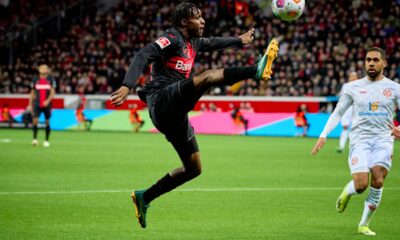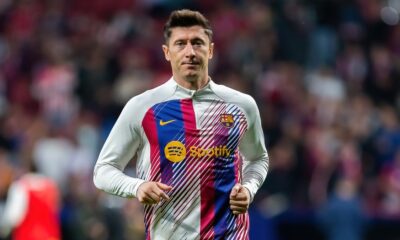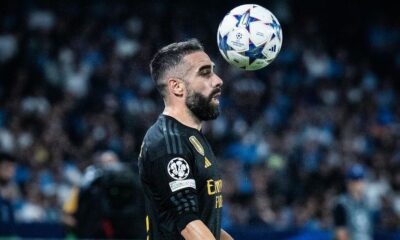Football
Stories of the faithful: Iker Casillas has made his way into the Real Madrid A-team and become a symbol and a legend of the club
Iker Casillas is considered one of the best goalkeepers in football history. The Real Madrid graduate made it to the A-team, where he started catching very early. What is the story of the legend of the royal club?

Iker Casillas is considered one of the best goalkeepers in football history. The Real Madrid graduate made it to the A-team, where he started catching very early. What is the story of the legend of the royal club?
Tales of the Faithful is a series by Ruik that follows players who have dedicated all or the vast majority of their careers to one club. In today’s edition, we take a look at Real Madrid goalkeeper Iker Casillas.
Origins and beginnings
One of the best goalkeepers in history was born on 20 May 1981 in Móstoles, a suburb of Madrid. Iker has a brother, Unaia, seven years younger than him. Both sons have Basque names, as it was from the north of Spain that Casillas’ parents originated and also lived there before moving to the capital.
In 1990, at the age of nine, Iker began his career and joined ‘La Fabricy’, Real Madrid’s youth academy. Gradually through the youth teams he rose higher and higher and his talent was immediately spotted.
27. on November 1997, at the age of just 16, he was called up for the first time for an A-team match. Against Rosenborg in the Champions League, however, he only remained on the bench. He then spent the season as the number one of the C-team in the fourth division and also as the number one of the Spanish youth national team, which he passed all the way to the A-team.
El gato
Thanks to his incredible reflexes and leaps, Casillas became known as “El gato”, meaning “The Cat”. At that time, he took public transport to training and A-team games because he couldn’t have a driving licence yet due to his age.
He made his debut between the three posts of Real Madrid’s goal on 15 September 1999 against Olympiakos in the Champions League. At 18 years and 177 days, he became the youngest goalkeeper in this competition.
In 2000, he became the youngest goalkeeper ever to play and win a Champions League final. Real Madrid beat Valencia and Casillas kept a clean sheet four days after his 19th birthday. A few weeks later, he also made his debut for the Spanish national team.
It’s almost like a Hollywood story, but Casillas didn’t have it so easy. In the 2001/02 season he lost his number one spot due to poor performances and was replaced in goal by the experienced César Sánchez. But Casillas was given a chance to redeem himself.
A memorable final
In the 2002 Champions League final, Sánchez came on, but was injured towards the end of the match and the untrained Casillas had to go in goal. But he was not ready for it at all.
“I wasn’t ready to play. I’ve always played with short sleeves because I felt more comfortable that way, but now I wasn’t ready. So I had to change quickly, I didn’t have short sleeves, I was nervous, especially in the LM final. The conditioning coach helped me cut my sleeves while Del Bosque gave me instructions,” Casillas recalls.
But if he went into the game unprepared, he came across as a big wise guy. He saved several big Bayer Leverkusen chances and made a huge contribution to the Champions League title.
In addition, after the injury to Santiago Canizares, he became Spain’s number one for the 2002 World Cup and put in a terrific performance there. It was mainly thanks to him that Spain advanced to the quarter-finals over Ireland, and here they got to the penalty shoot-out against South Korea. Spain lost there, but Casillas still earned the nickname San Iker after his performance.
The national team’s king
One of the best seasons for Casillas was 2007/08. He won the title with Real Madrid and conceded only 32 goals in 36 games. Moreover, the club prepared a beautiful gift for him, a contract of a lifetime until 2017 – that’s how much he was appreciated at the Santiago Bernabéu.
He also led Spain to the trophy at EURO 2008 with the captain’s armband. He kept a clean sheet in the semi-finals and the final. But he scored an even bigger success two years later.
He led Spain to its first ever World Cup trophy and Casillas is forever etched in golden letters in Spanish history. The championship in South Africa was his. He kept five clean sheets, conceded only two goals, grabbed a penalty in the quarter-final and, most importantly, pulled off a fantastic save against Arjen Robben’s solo effort in the final against the Netherlands.
Two years later came Spain’s defence at the Euros, but it wasn’t easy. At that time, with Mourinho and Guardiola on the bench, El Clásico was very heated and there were big arguments between Real and Barcelona players in the national team. But Casillas and Puyol calmed the situation down and went on to win their third gold in a row.
Over at Real
Real Madrid continued to roll on. In February 2009, he broke Paco Buya’s record (454 starts) and became the goalkeeper with the most starts for Real Madrid in history. He was only 27 years old at the time. In the 2010/11 season, Iker became Real Madrid captain after the departures of Raúl and Guti.
In 2012, Casillas won the IFFHS World’s Best Goalkeeper award for the fifth time in a row, becoming the clear record holder.
But at the end of 2012, the first problem came with José Mourinho – he sat him out against Málaga and fielded Antonio Adán. It didn’t escalate into any major trouble then, but..
In January 2013, however, Casillas was unluckily injured when his teammate Álvaro Arbeloa accidentally broke his arm. Mourinho signed Diego López and designated him number one. This was true even after Casillas’ return. After the season, Mourinho left and was criticised for his treatment of Casillas even by a rival – Andrés Iniesta of Barcelona.
After the arrival of Carlo Ancelotti, however, not so much changed – Diego López was still the number one for La Liga, Casillas, however, caught the LM and CDR matches.
It was in the Copa del Rey that he set another record – he didn’t score for 962 minutes in a row and became the first goalkeeper to go all rounds in the CDR without a goal. At the end of the 2013/2014 season, Real celebrated two titles with Casillas in goal – first beating Barcelona in the Copa del Rey final and then winning the famous La Décima.
In the 2014/15 season, he was Real’s number one again, but poor performances and competition from Keylor Navas eventually deprived him of the post.
In the summer of 2015, Iker left his beloved club after 25 years. But the departure was a fiasco. The club did not give him a proper farewell party, as befits such a legend.
Casillas sat alone at a press conference and announced his departure to the press in tears he could not stop. Real, led by president Florentino Pérez, were hugely criticised for this.
His legacy at Real Madrid, however, is considerable::
5 La Liga titles
3 LM titles
2 CDR titles
2 European Super Cups
1x Spanish Super Cup
2x Intercontinental Cup and subsequently
1x World Club Championship
He then moved to Porto, where he stayed until the 2018/19 season, when a myocardial infarction ended his career. Thus, he finally officially retired in 2020 and returned to Real Madrid. He first served as an advisor to President Florentino Pérez and then became CEO of the Real Madrid Foundation. He still holds this position today.
Source: Real Madrid, Wikipedia, Bernabeu digital












